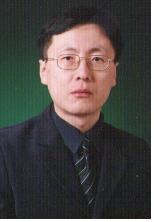Jae-Wang Kim Professor

| Career and thesis | |
|---|---|
| Education | M.D., Ph.D., Department of Dermatology, Hallym University, College of Medicine, Korea |
| Major career | Director of Dermatology, Jeju National University Hospital. |
| main paper | 1. Jeong WS, Kim JS, Heo ST, Kim JW, You JR. Atypical cutaneous features in a patient with adult-onset Still’s disease. Kor J Int Medicine 2020; April 3[Epub ahead of print] https://doi.org/10.3904/kjim.2019.389 2. Kim KW, Yun BM, Shin MS, Kang JK, Kim JJ, Kim YS. Effectiveness of radiotherapy for head and neck skin cancers: a single-institution study. Radiat Oncol J 2019;37(4):293-301 3.Kim HS, Kim YS, Lee C, Shin MS, Kim JW, Jang BG. Expression profile of sonic hedgehog signaling-related molecules in basal cell carcinoma. PLoS ONE 2019;14(11): e0225511 4. Lee JC, Kim JW. Experience of Stevens-Johnson Syndrome and Toxic Epidermal Necrolysis in a Regional Hospital: 70 Cases in 7 Years. Korean J Med 2017;92:171-176 5. Cheon MS, Kim JW. Tuberculosis verrucosa cutis confirmed by culture. Korean J Dermatol 2017;55:60-64 6. Kim HS, Shin MS, Cheon MS, Kim JW, Lee C, Kim WH, et al. GREM1 is expressed in the cancer-associated myofibroblasts of basal cell carcinomas. PLoS ONE 2017;12(3): e0174565 7. Jang BG, Lee C, Kim HS, Shin MS, Cheon MS, Kim JW, Kim WH. Distinct expression profile of stem cell markers, LGR5 and LGR6, in basaloid skin tumors. Virchows Arch 2017;470:1-10 8. Song SW, Yoo SJ, Yoo JR, Lee KH, Kim JW, Heo ST. Severe Fever with Thrombocytopenia Syndrome Mimicking Scrub Typhus: Three Case Reports. J Korean Soc Emerg Med 2015;26:326-330 9. Lee HS, Hong SC, Kim JH, Kim JW, Lee KH, Lee JC. A Cross-sectional Epidemiological Study on Trends in the Prevalence of Allergic Diseases among Children and Adolescents in the Jeju Area in 2008 and 2013. J Korean Acad Community Health Nurs 2015;26:160-168 10. Lee HS, Hong SC, Kim JH, Kim JW, Lee KH, Lee JC. Variation in Aeroallergen Sensitization Rate of the Children in Jeju Province in 1998, 2008 and 2013. Korean Public Health Research 2014;40:63~74 11. Lee HS, Hong SC, Kim JH, Kim JW, Lee KH, Lee JC. Prevalence of Food Allergy and the Sensitization Rates of Food Allergens in School-Aged Children in Jeju. Korean Public Health Research 2014;40:49~58 12. Heo ST, Cheon MS, Kim JW. Four cases of severe fever with thrombocytopenia syndrome occurring in Jeju. Korean J Dermatol 2014;52:173-177 13. Jo J, Heo ST, Kim JW, Kim J, Yu JR. Secondary Syphilis with Nodular Vasculitis Mimicking Behcet’s Disease. Infect Chemother 2013;45:451-454 14. Lee HS, Hong SC, Kim JH, Kim JW, Lee KH, Lee JC, Jeong JH. Isle inhabitants' aeroallergens sensitization rates and their connection on allergic Diseases. Korean Public Health Research 2013;39:9-20 15. Kim JW. Dengue hemorrhagic fever developed after traveling Vietnam. Korean J Dermatol 2013;51:721-724 16. Noh JW, Kim J, Kim JW. Localized scleroderma: a clinical study at a single center in Korea. Int J Rheum Dis 2013;16:437-441 17. Lee HS, Hong SC, Kim JH, Kim JW, Lee KH, Lee J, Jeong JH. Complete enumeration for the prevalence of allergic disease in Udo Isle's inhabitants. Allergy Asthma Respir Dis 2013;1:116-122 18. Yu JR, Heo ST, Lee KH, Kim J, Sung JK, Kim YR, Kim JW. Skin and Soft Tissue Infection due to Rapidly Growing Mycobacteria: Case Series and Literature Review. Infect Chemother 2013;45:85-93 19. Lee HS, Lee JC, Kim JW, Hong SC, KIm SY, Lee KH. The prevalence of allergic diseases in children living in Jeju. Pediatr Allergy Respir Dis 2012;22:248-255 20. Lee HS, Lee HC, Hong SC, Kim JW, Kim SY, Lee KH. Prevalence and risk factors for allergic diseases of preschool children living in Seogwipo, Jeju, Korea. Korean J Asthma Allergy Clin Immunol 2012;32:107-114 21. Lee HS, Hong SC, Kim SY, Kim JW, Lee KH. Prevalence of allergic diseases and risk factors: a cross-sectional study of 4,098 high school students at Seogwipo, Jeju province. Korean Public Health Research 2012;38:45-55 22. Lee HS, Hong SC, Kim SY, Lee KH, Kim JW, Kim JH, Cjoi SH. The influence of the residental environment on the sensitization rates to aeroallergens and the prevalence of allergic disorders in the school children in Jeju. Pediatr Allergy Respir Dis 2011;21:176-185 23. Kim TY, Kim JW, Kim HU, Kim JS. A case of scleroderma mimicking systemic sclerosis with hypoalbuminemia induced by malabsorption in alcoholic chronic pancreatitis. J Rheumatol Dis 2011;18:197-202 24. Kim JW. Stevens-Johnson syndrome caused by Dapsone. Korean J Dermatol 2011;49:255-259 25. Kim JW. Acquired secondary syphilis in early childhood. Korean J Dermatol 2011;49:159-163 26. Kim JW. Munchausen's syndrome presenting as dermatitis artefacta. Korean J Dermatol 2011;49:179-183 |












 예비대학생
예비대학생 재학생
재학생 졸업생
졸업생 일반인
일반인 교직원
교직원